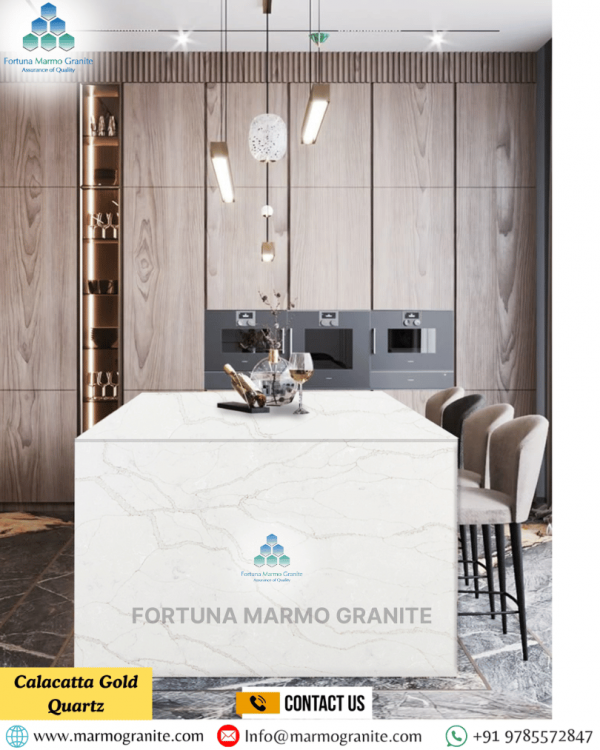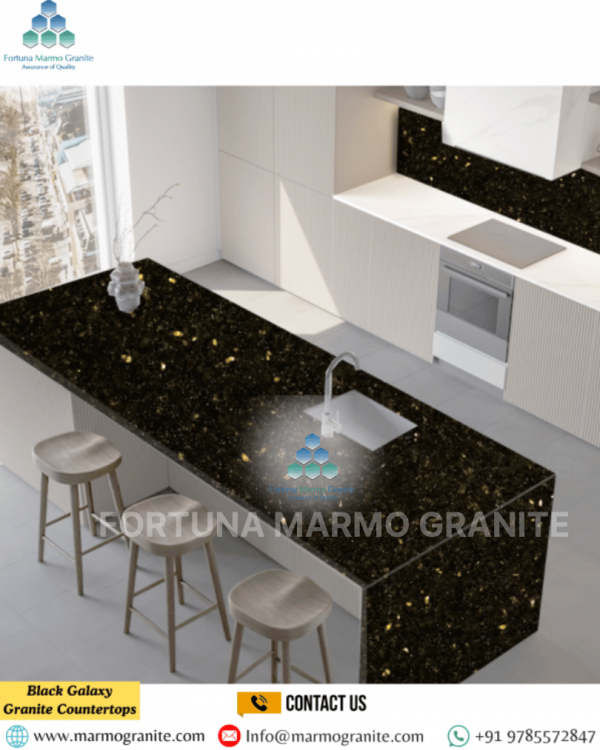Quartz vs. Granite: Which Surface Is Right for Your Space?
Quartz vs Granite Choosing the perfect countertop material is one of the most significant decisions you'll make when designing or renovating your kitchen or bathroom. Consequently, It's not just about finding a surface that looks good—although aesthetics do play a critical role—but also about selecting a material that aligns with your lifestyle, performance expectations, maintenance preferences, and long-term investment goals. Yet, Countertops are a central part of any space, often setting the tone for the entire design while enduring daily wear and tear.
Moreover, This blog presents a thorough and insightful comparison between quartz and granite countertops, guiding you through every essential aspect that matters—from their source and manufacturing techniques to their visual appeal, structural integrity, ease of maintenance, and cost-effectiveness. In addition, We'll explore the rich geological history behind granite's formation and the precision of modern engineering that gives quartz its polished reliability.
Quartz: Engineered Elegance
Quartz countertops, also known as engineered stone surfaces, showcase modern innovation in interior design and architecture. Manufacturers blend 90%–94% natural ground quartz — one of the hardest minerals in the Earth's crust — with high-performance polymer resins, pigments, and sometimes decorative elements like metallic flecks or recycled glass.
In addition, This mixture undergoes extreme heat and pressure using advanced vibrocompression vacuum technology. Yet, The result is a dense, uniform, and fully non-porous surface. Unlike natural stones such as granite or marble, quartz resists stains, hidden fissures, and moisture.
Moreover, Quartz countertops are ideal for high-traffic areas like kitchens and bathrooms. Quartz vs Granite, Their consistent patterns, wide color options, and low maintenance make them perfect for modern interiors. By combining natural beauty with advanced engineering, quartz offers elegance, practicality, and long-lasting performance, making it a favorite among homeowners, architects, and interior designers.
Practical Performance: Durability and Hygiene
Quartz's composition makes it incredibly durable. It is highly resistant to scratches, chips, and cracks, standing up well to the rigors of daily kitchen activities. The resin binders contribute to its flexibility, making it less brittle than some natural stones.
Moreover, Perhaps its most celebrated practical advantage is its non-porous nature. Unlike natural stone, quartz does not need to be sealed, ever. This non-porous surface makes it inherently hygienic, resisting the growth of bacteria, mold, and mildew. Quartz vs Granite, In addition, Spills, from red wine to coffee, tend to sit on the surface, making cleanup a breeze with just soap and water. This ease of maintenance is a major draw for busy households and those prioritizing cleanliness.
In addition, However, quartz does have a vulnerability: heat. While it can withstand moderate heat, prolonged exposure to extreme temperatures (e.g., placing a hot pot directly from the stove onto the surface) can cause the resin to scorch, discolor, or even crack. Always use trivets or hot pads with quartz countertops.
| Feature | Quartz | Granite |
|---|---|---|
| Composition | 90-94% ground quartz, polymer resins, pigments | Natural stone (quartz, feldspar, mica, other minerals) |
| Appearance | Consistent patterns, wide color range, can mimic natural stone accurately | Unique, natural variations; no two slabs are identical |
| Maintenance | No sealing ever required; easy to clean | Requires periodic sealing (annually/bi-annually); easy to clean once sealed |
| Porous/Non-Porous | Non-porous | Porous |
| Stain Resistance | Highly resistant | Good, if properly sealed; vulnerable if unsealed |
| Heat Resistance | Good, but vulnerable to extreme heat (use trivets) | Excellent; highly resistant to high temperatures |
Granite: Nature's Masterpiece
The Uniqueness of Natural Beauty
Additionally, The primary appeal of granite comes from its natural beauty and individuality. No two slabs are exactly alike, even if they come from the same quarry. Differences in mineral composition, crystal size, and veining create patterns and colors that are truly unique. This organic variation gives granite its timeless charm and often makes it the centerpiece of a kitchen or bathroom design. From subtle speckles to dramatic swirls and striking mineral deposits, granite offers an authentic, earthy aesthetic that synthetic materials cannot replicate.
Moreover, This uniqueness can also pose a challenge. When selecting granite, it is highly recommended to view the actual slabs for your project, as small samples may not fully reflect the variations in a full slab.
Robustness and Resilience
In addition, Granite is renowned for its exceptional hardness and durability. As one of the hardest natural stones, it resists scratches, chips, and heat. Consequently, You can often place hot pots and pans directly on the surface, though using trivets helps protect the sealant and maintain longevity. Granite also handles everyday wear and tear well, making it ideal for high-traffic areas.
Consequently, Despite its strength, granite is porous, containing microscopic pores that can absorb liquids if not properly sealed. Yet, For this reason, countertops require periodic sealing—usually once a year or every few years, depending on the granite type and usage. Sealing prevents stains from oil, wine, and other acidic liquids. Without it, spills can cause discoloration that is difficult to remove.
Which Surface Is Right for Your Space?
Choose Quartz if:
- Moreover, Prioritize consistency in pattern and color across your countertops.
- In addition, Desire a low-maintenance surface that never needs sealing.
- Are concerned about hygiene and want a non-porous material.
- Yet, Want a wide range of color options, including solid colors or patterns that mimic natural stone with precision.
- Are comfortable using trivets for hot items.
- Budget aligns with a mid-to-high-range engineered stone.
Choose Granite if:
- Moreover, Are drawn to the unique, organic beauty and individuality of natural stone.
- Appreciate the idea of owning a piece of Earth's geology.
- In addition, Value exceptional heat resistance and scratch resistance.
- Yet, Don't mind periodic sealing as part of your maintenance routine.
- Budget allows for a natural stone, potentially ranging from affordable to luxurious.
- Prefer a more traditional or classic aesthetic.
Conclusion
Indian Granite Supplier , when it comes to choosing between quartz and granite for your home or commercial space, the decision should be rooted in a careful assessment of your design vision, functional needs, and maintenance expectations. Subsequently, Granite, a 100% natural stone, is known for its distinctive beauty, rich color variations, and natural veining that make every slab a one-of-a-kind masterpiece. It appeals to those who appreciate the uniqueness of nature and want to bring that organic charm into their interiors. Moreover, With proper sealing and minimal care, granite can last a lifetime, offering excellent heat resistance and durability, making it an ideal choice for countertops, vanity tops, and other high-use surfaces. Consequently, On the other hand, quartz—an engineered surface made from natural quartz crystals and resin—delivers a more uniform appearance, is non-porous, and requires very little maintenance.
However, your final selection should reflect your personal style, usage habits, and the overall ambiance you wish to create. Quartz vs Granite, Whether you lean toward the raw elegance of granite or the refined practicality of quartz, Fortuna Marmo Granite is here to assist you at every step. Yet, With years of expertise in natural and engineered stone, we offer not only a diverse and premium range of granite and quartz slabs but also professional guidance tailored to your unique project needs. Our commitment to quality, customer satisfaction, and global export excellence makes us your trusted partner in transforming ordinary interiors into extraordinary spaces. Let Fortuna Marmo Granite help you make the right choice, ensuring your surfaces are as enduring and beautiful as your vision.



